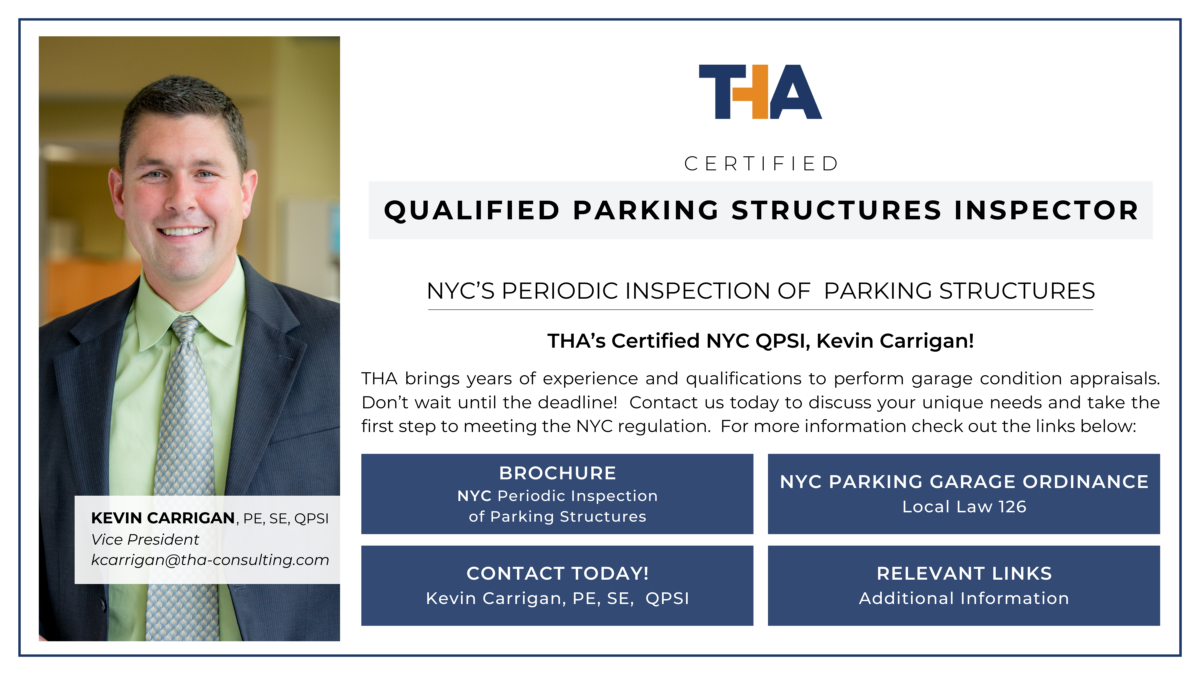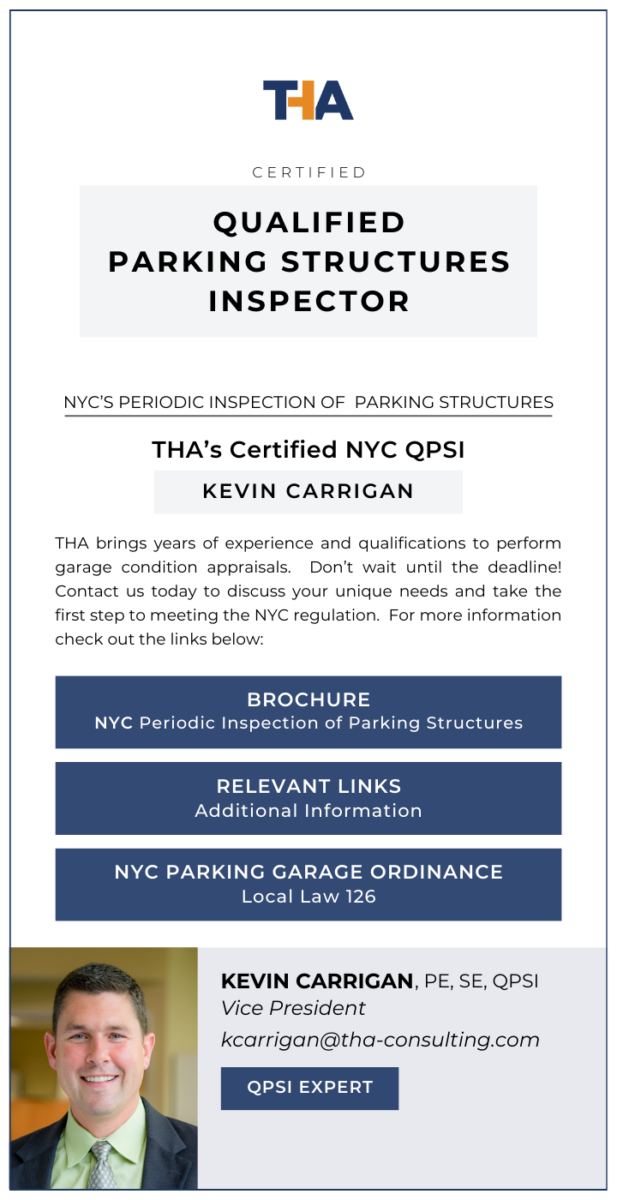What are recommended strategies for snow removal and ice control in parking facilities?
Snow Removal
A proactive approach to maintenance during inclement weather is always encouraged. We recommend a written policy that is communicated to all staff and reiterated in advance of a weather event. This plan should include both mandatory and recommended strategies, which may include the strategies discussed below.
Communicate with patrons as appropriate to convey potential weather impact as well as recommendations for how and when to safely park and use the facility.
Determine if snow removal is necessary based on the parking demand. If snow removal is not necessary, develop a plan to safely close off the top tier and other areas of the facility that are exposed to snow. Ensure that code-required pedestrian egress pathways are cleared and remain open. Additionally, study the traffic patterns within the facility to determine if snow removal is necessary in limited areas to maintain traffic flow. Evaluate closed parking levels or sections for obstructions to parking spaces, vehicle movement, and pedestrian access. Areas that are closed off must be monitored as snow melts and additional precipitation falls, to avoid a buildup of heavy, saturated snow.
Snow removal and ice control measures may be necessary in, around, and below the closed-off areas to address melting snow that re-freezes, wind-driven snow, snow drifts, buildup of heavy saturated snow, etc. Snow removal may also be required to meet parking demand. There are three main options regarding snow removal:
- using a portable snow melt machine.
- hauling the snow out of the garage.
- dumping the snow at a properly designed snow dump zone.
Consult a structural engineer to ensure that the selected snow removal option does not exceed the capacity of the structure.
Snow is normally plowed downhill using a vehicle with a gross vehicle weight rating not more than 8,000 pounds. The snowplow blade should consist of a heavy rubber or polyurethane cutting edge. The snowplow should include tires or polyurethane skid shoes designed to keep the blade from contacting the concrete floor surface. Keep the blade one-half inch above the floor surface to avoid damage to concrete, expansion joint systems, joint sealants, and traffic topping systems. Plowing should be done away from joints, not across them. The snowplow operator must be familiar with the structure and the elements that are susceptible to damage, as well as take precautions, such as raising the plow at expansion joints to prevent damage. Permanent or temporary signs are recommended at critical locations, such as the expansion joints, to notify the snowplow operation to take caution.
Snow dump zones are a common snow removal option. Snow is plowed to the snow dump zone, which is typically designed for heavy snow loading. A “Bobcat” or industrial snow blower can be used to dump the snow over the side. Take care with a “Bobcat” or snow blower to avoid damage to concrete surfaces, connection hardware, waterproofing, and expansion joints. Similar to the snowplow, “Bobcat” buckets must include a polyurethane cutting edge and skid shoes. Dumping the snow over the side of the garage is acceptable if it is done safely and provisions are made to prevent snow from falling into the garage. The dumping zone should be fenced off at grade and must drain freely when the snow melts.
DO NOT pile snow within the garage unless the structure has been designed for this type of loading. If snow is piled and then becomes saturated, it may exceed the load capacity of the structure, creating a potential structural failure or collapse. Contact us or the structural engineer of record of your parking facility to verify the acceptable depth of snow within your facility.
Off-peak snow removal operation may be required to deal with heavy snowfalls effectively and safely.
Snow can also be quickly brushed away with a rotary broom mounted in front of a utility vehicle. Clearing snow with a rotary broom is typically efficient only for light snowfalls. Steel or other metallic bristles on rotary brooms can damage traffic topping and must not be used under any circumstances.
Studded snow tires and tire chains cause damage to concrete and traffic topping and should be prohibited.
Ice Control
All de-icing compounds, including road salt, do not work in extremely cold temperatures. Do not apply de-icing chemicals containing chloride directly to the concrete unless extreme ice conditions exist. Ice buildup can be controlled by using hot sand or a mixture of sand and approved de-icing agents. Drain systems should be protected against runoff-related sand accumulation during ice control operations. Use temporary burlap or straw filters to prevent drain clogging and possible damage to drain systems. The use of sand requires additional sweeping and cleaning maintenance.
Properly designed, air-entrained, and cured concrete is required to provide a durable concrete structural system, but concrete curing is an ongoing process. Minimize the use of de-icing chemicals during the first two years of concrete curing.
The slope of the floors should be designed to drain surface water as quickly as possible. Continually evaluate entry/exit lanes, the top level, and ice-prone areas at the covered levels of the garage, as they are vulnerable to icing when water drains from sun-warmed surfaces into shaded areas. Standing water in these areas can create slip-and-fall hazards, as well as contribute to deterioration of concrete. Be aware of these areas and control icing as it occurs.
Most common chemical de-icers can have major chemical and physical effects on reinforced concrete systems. Several de-icers are listed below with a general description of the common effects on materials typically found in and around parking facilities. Although a de-icer may affect one type of material (such as metals and steel reinforcing, or steel connections), and have little effect on other materials (such as concrete), the effect on the single material may progressively affect the entire reinforced concrete system. For example, when these de-icers form a solution with water, they may reach steel via cracks in the concrete and cause serious deterioration of structural components.
The following summarizes common de-icing agents:
- Sodium Chloride (halite, table salt, or rock salt) has little chemical effect on concrete, but will damage lawns and shrubs. It promotes metal corrosion. Do Not Use.
- Calcium Chloride, a major active component of many proprietary de-icers, has little chemical effect on concrete, lawns, and shrubs, but it causes corrosion of metal. It is particularly hazardous to prestressing steel. Do Not Use.
- Calcium Magnesium Acetate (CMA) is available as “CMA”, manufactured by Cryotech. Solid CMA pellets help break up the bond between the ice and the driving surface. It acts similarly to salt, but is slower-acting – typically 10 to 15 minutes. CMA has no known adverse effects on concrete or embedded reinforcement. CMA will not damage lawns or shrubs.
- Potassium Acetate is available as “CF7 ®”, manufactured by Cryotech. It is a non-chloride based clear liquid de-icer that is effective at -25ºF. Potassium Acetate is best used as an anti-icer, sprayed on the pavement before precipitation starts, but it can also be used as a de-icer. It is very effective as a prewetting agent for solid de-icers such as CMA.
- Sodium Acetate is available as “NAAC”, manufactured by Cryotech. NAAC is a biodegradable & low toxicity material which contains no chlorides. This product is effective at -0ºF and approved for use at airports and commercial facilities.
- Ammonium Nitrate or Ammonium Sulfate is beneficial to most vegetation, but may lead to complete destruction of concrete because of direct chemical attack on concrete reinforcement. Do Not Use.
- Prilled Urea does not damage concrete, lawns, shrubs, or metal. Prilled urea does not behave the same as common road salts. Our reports are as follows:
- Attracts moisture or stays “mushy” longer than salted areas.
- Takes longer (than salt) to penetrate ice.
- Will work best at breaking up ice with solar action. Tends to have little effect after dark or at temperatures below 24° F.
- Use urea to break up ice and then shovel.
- Ethylene Glycol, or a solution of ethylene glycol and urea, is used by many airports for ice control on runways and planes. While effective to -40° F and non-damaging, it is considerably more expensive than urea.
- Sand, or a mixture of sand and de-icers, may be used to eliminate or reduce the use of de-icers.
Recommended de-icing measures, in order of decreasing preference, are:
- Clean, plow, and remove ice and snow. Do not use de-icing agents if there are no remaining traces of ice and snow or water that could re-freeze.
- Use Calcium Magnesium Acetate (CMA) when concrete is less than a year old. Apply CMA at the application rate recommended by the manufacturer.
- Use Sodium Acetate (NAAC) when concrete is more than a year old or is protected by a traffic membrane. Apply NAAC at the application rate recommended by the manufacturer.
- For increased effectiveness, spray-apply liquid Potassium Acetate (CF7) before precipitation starts, followed by solid de-icers (CMA or NAAC) after precipitation starts.
- Use sand to increase traction. When washing down, place burlap or straw filters over floor drains to keep sand out of drainage systems.
- Never use Calcium Chloride, Sodium Chloride, Ammonium Nitrate or Ammonium Sulfate.
*Federal, State, and Local codes govern most of these requirements and should be thoroughly investigated. Data presented herein should be considered guidelines only. For more specific information and assistance with implementation of these guidelines, please contact THA Consulting, Inc. via email at info@tha-consulting.com


